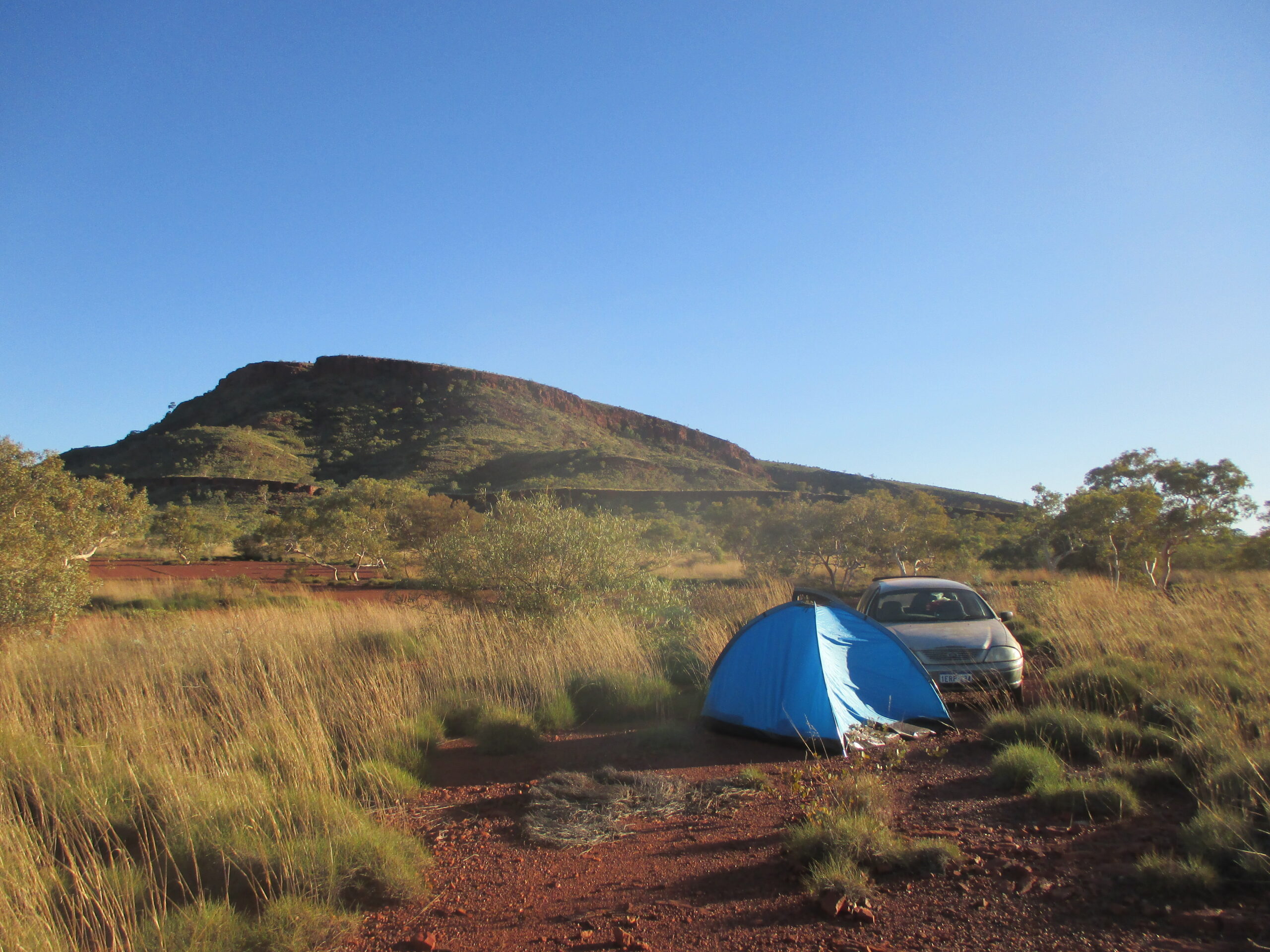Western Australia to the Northern Territory - Part Three
The long drive
Kalbarri National Park was our destination, and it took over nine hours to get there from Exmouth. Much of the route was on lengthy, dusty roads, that made for slow progress. The scenery was fascinating, though. Miles and miles of desert baked red with light flora – often straggly green bush, that has somehow adapted to living on the world’s driest continent.
Karijini rises above a mostly flat landscape. And it is an explosion of colour. It is much more densely packed with flora than the surrounding region, likely due to the fresh water supply. After an exhausting drive, there wasn’t much else to do that night except for setting-up camp, cooking and eating, then sleeping.
On a road trip when your vehicle doubles as your place of rest requires some manoeuvring to make it work. My nightly routine consisted of washing up pots and plates, then preparing my bed – which was the boot of my estate (saloon) car. Once I’d done set-up the bed a few times, it became almost automatic. I left the 20-litre water tank and spare wheel outside for the night. Then, I would quickly rearrange the baggage and put the seats down. Finally, I had to lay out my blankets and pillow that made the car comfortable enough to sleep in – and voila.


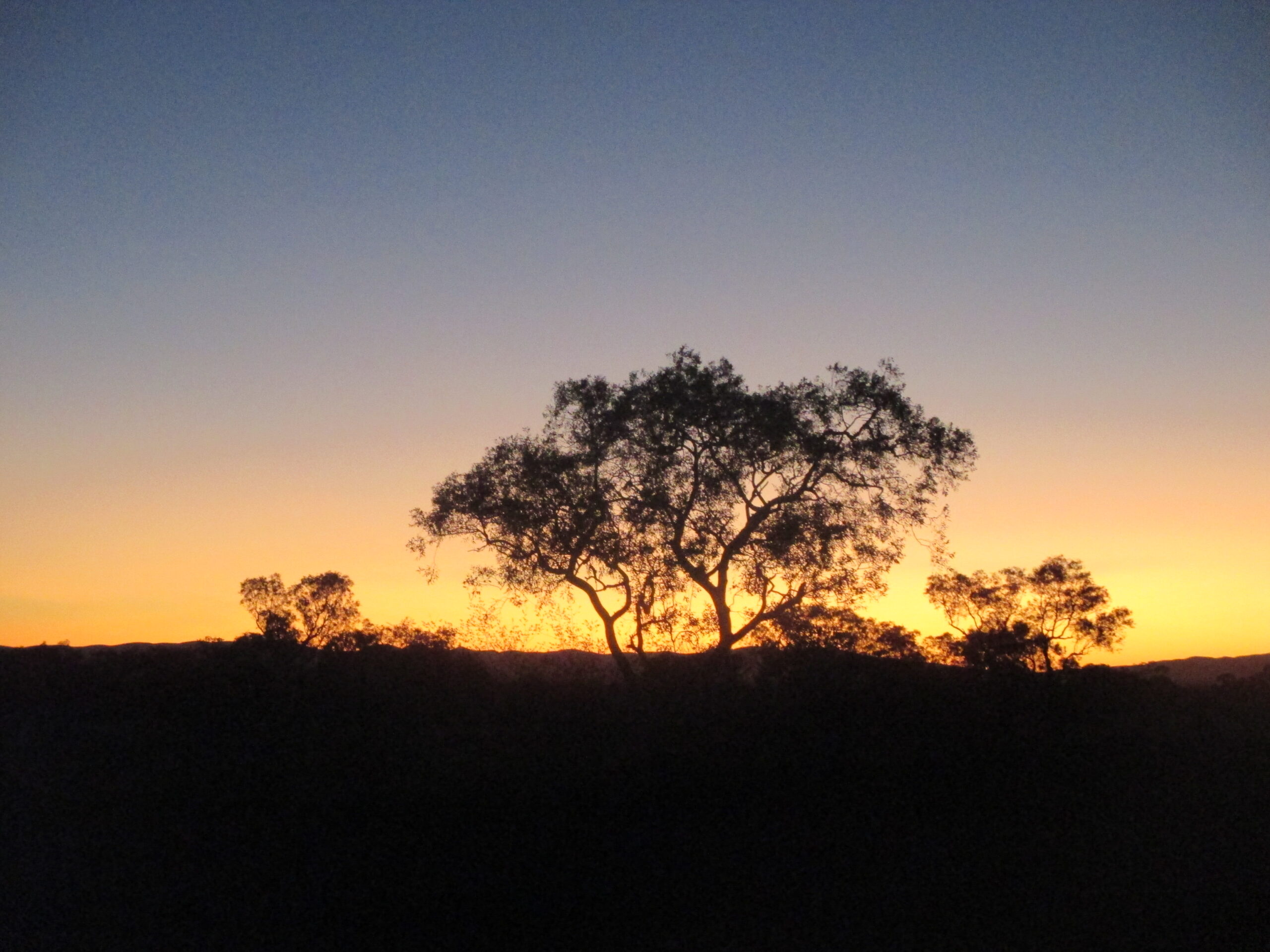
Karijini
I had a lot of fun in Karijini. We started with a short walk high above one of the many deep canyons in the park, with great vantages point over the valley below. The red stone has been carved dramatically by the water running through the park, creating a magnificent network of rivers hidden by steep rock walls.
On our second walk, we followed the trail into one of those valleys, descending a sharp path. Once in the gorge, we edged along the walks of rocks, as the way became narrower – with both sides creeping in. We followed a stream that ran beneath us until we reached a circular pool, entirely surrounded by rock faces.
Here we learnt from other visitors that you can swim through a tunnel in the rock to an area only accessible by water. The only problem was, despite the heat, the water was very cold.
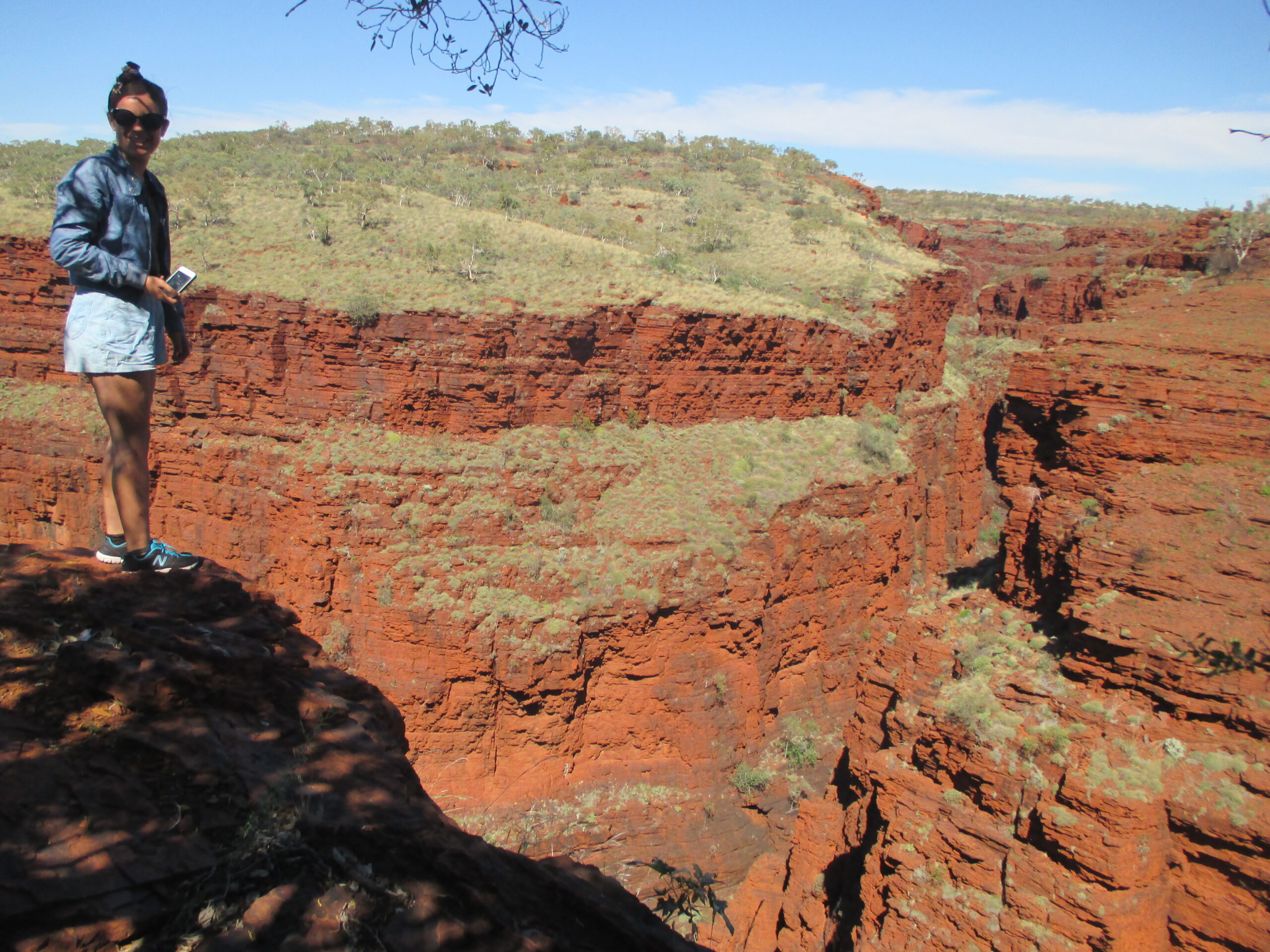


A refreshing swim
We stood at the water’s edge for a while, tapping our toes, searching for the courage to jump in. I must give credit to Katie and Lucy, who both went in before me. Not to be left behind, I took the leap into the cold water. After the initial shock of the temperate difference, the water was tolerable for ten minutes or so. We dived under the water’s surface into the tunnel and swam through. It was a cool experience, to be under a huge red rock formation, in the middle of a desert, in fresh, cool water.
After a full day wandering around other areas of the park, we made it back to camp for sunset. We met another traveller and invited him to join us for food and drinks. I think it’s a combination of the setting, being relaxed in nature, that allows me to make connections more quickly when travelling. The guy from France had a homebrewed wine he’d been gifted by his manager at work and kindly shared it. We had a good conversation about our travels, past and present. And after the day’s activities, plus the wine, I slept soundly that night.
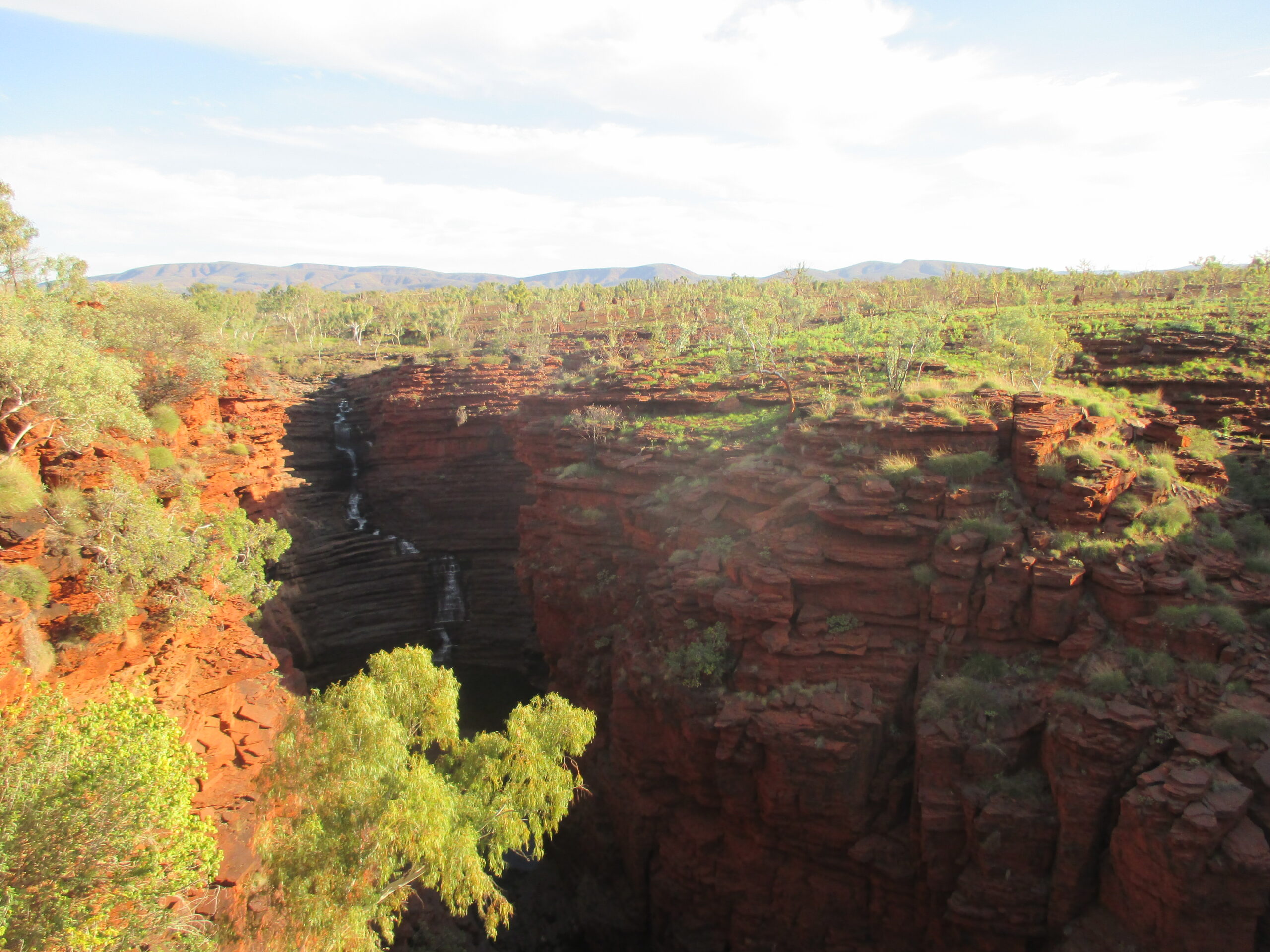
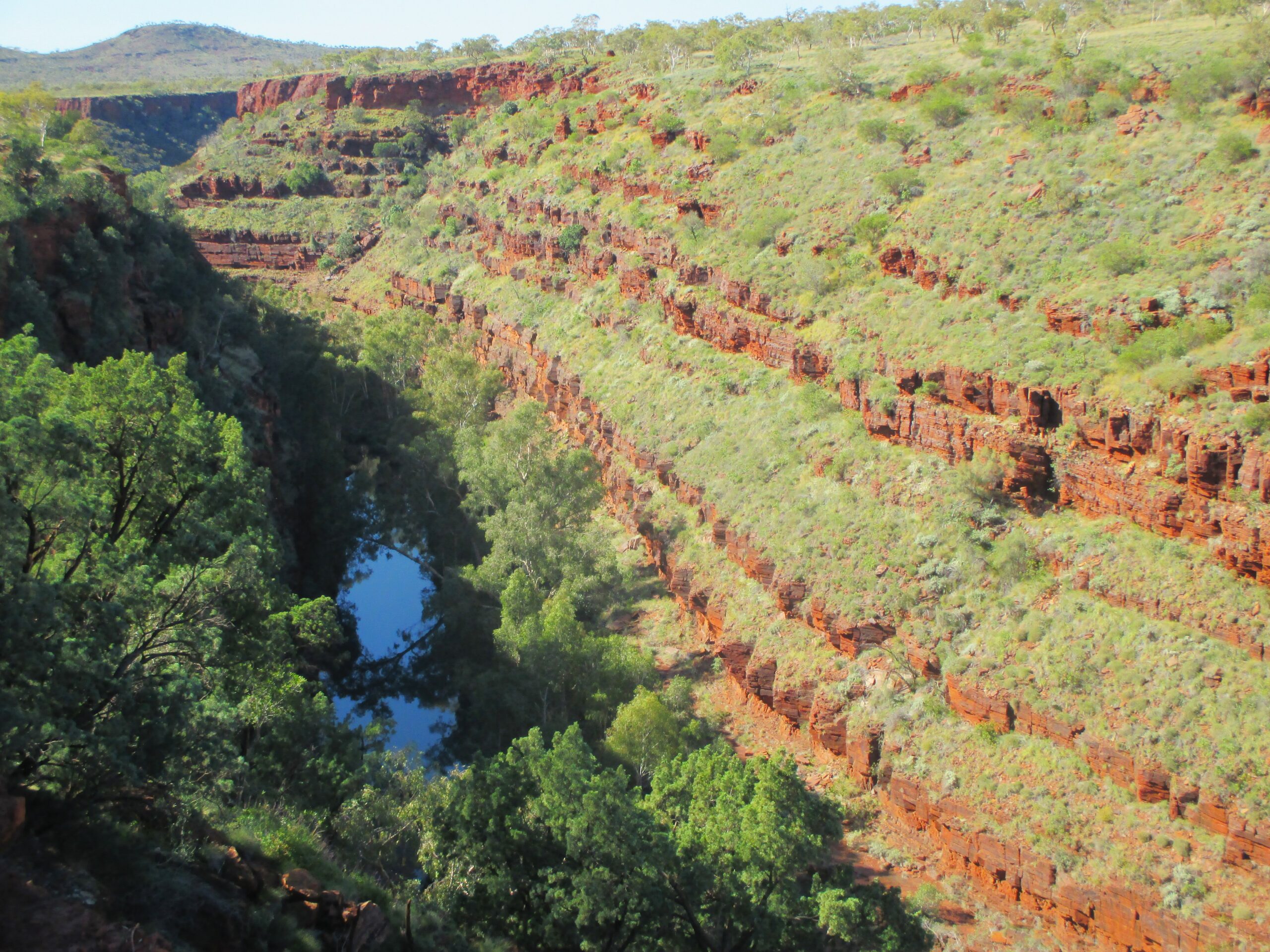

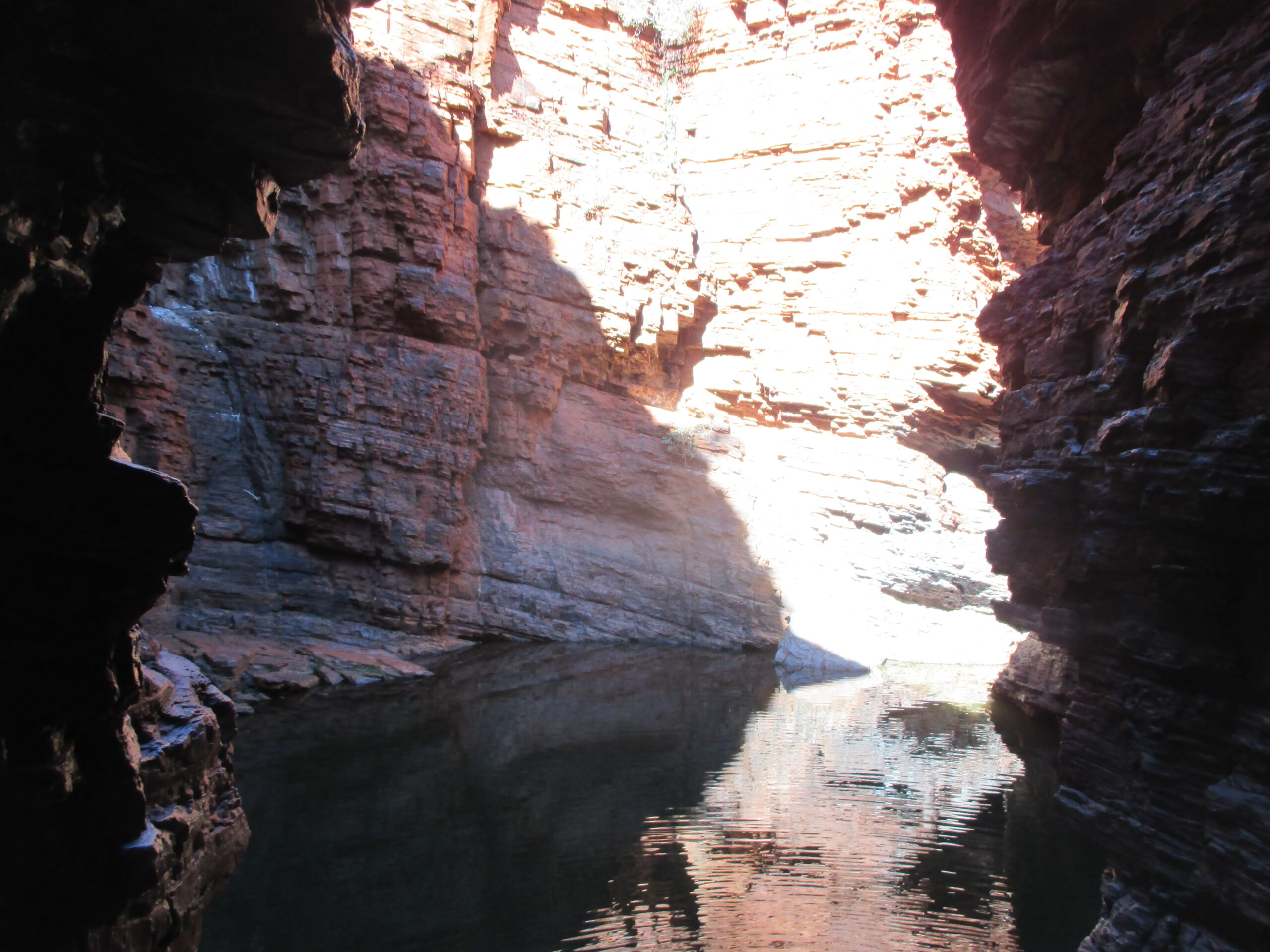
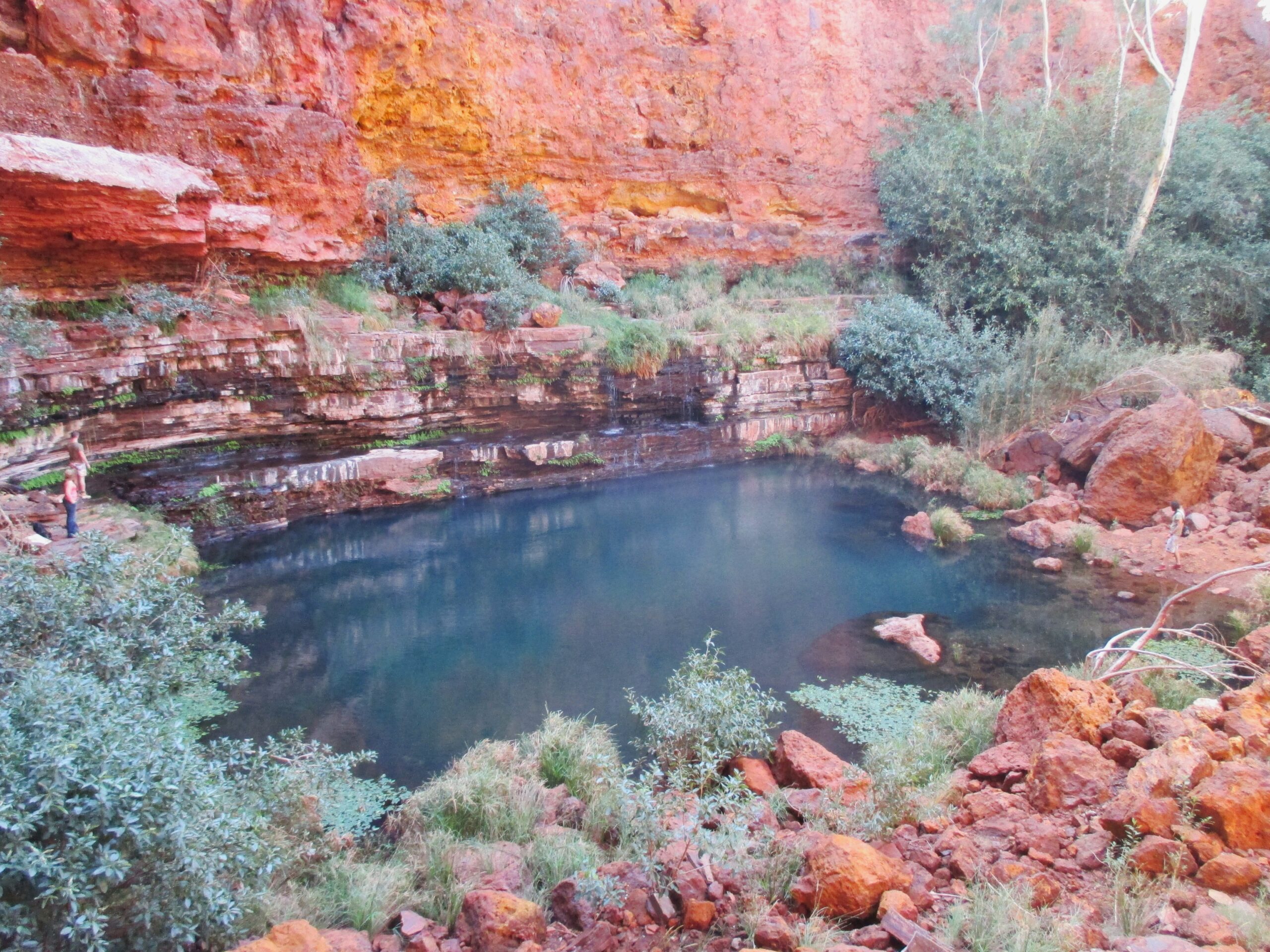
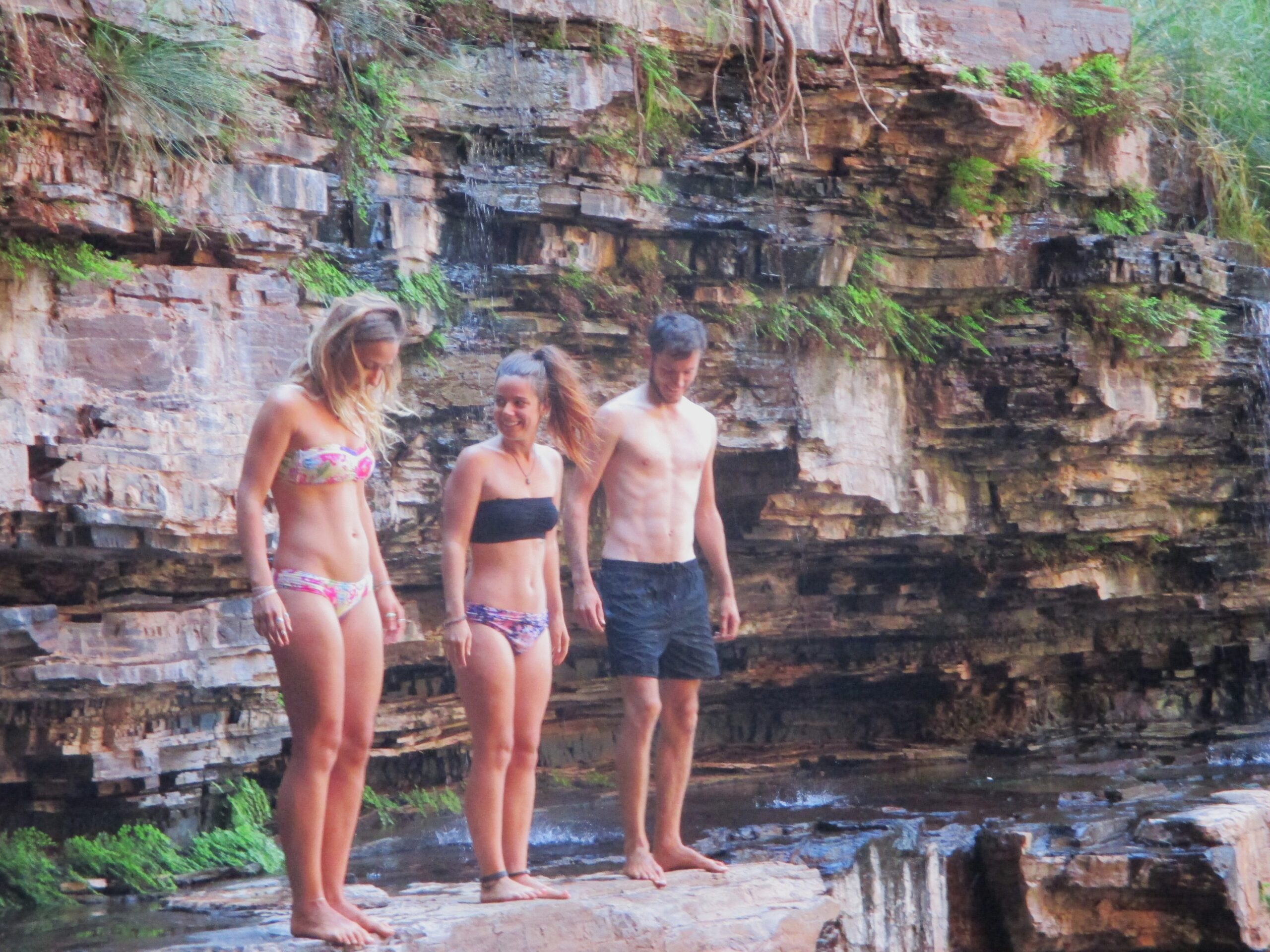
The adventure continues
Before we left the park, we made use of the hot showers at the visitor centre – a road-trippers dream – then headed north. We spent that evening on the outskirts of the park, feeling very much like we were in the outback. Not least when we heard the howls of the wild dogs in the night. There were also huge termite mounds scattered between patches of bush.
The next morning started with a dip in another rock pool at Hammersley Gorge, in similar scenery to Karijini. We then decided to take a detour to Millstream-Chichester National Park. I was weary of the extra miles resulting in us running out of fuel, having had such an experience in Australia already. After some gentle encouragement, I agreed – and I was thankful for the reminder that too much caution can stifle an adventure.
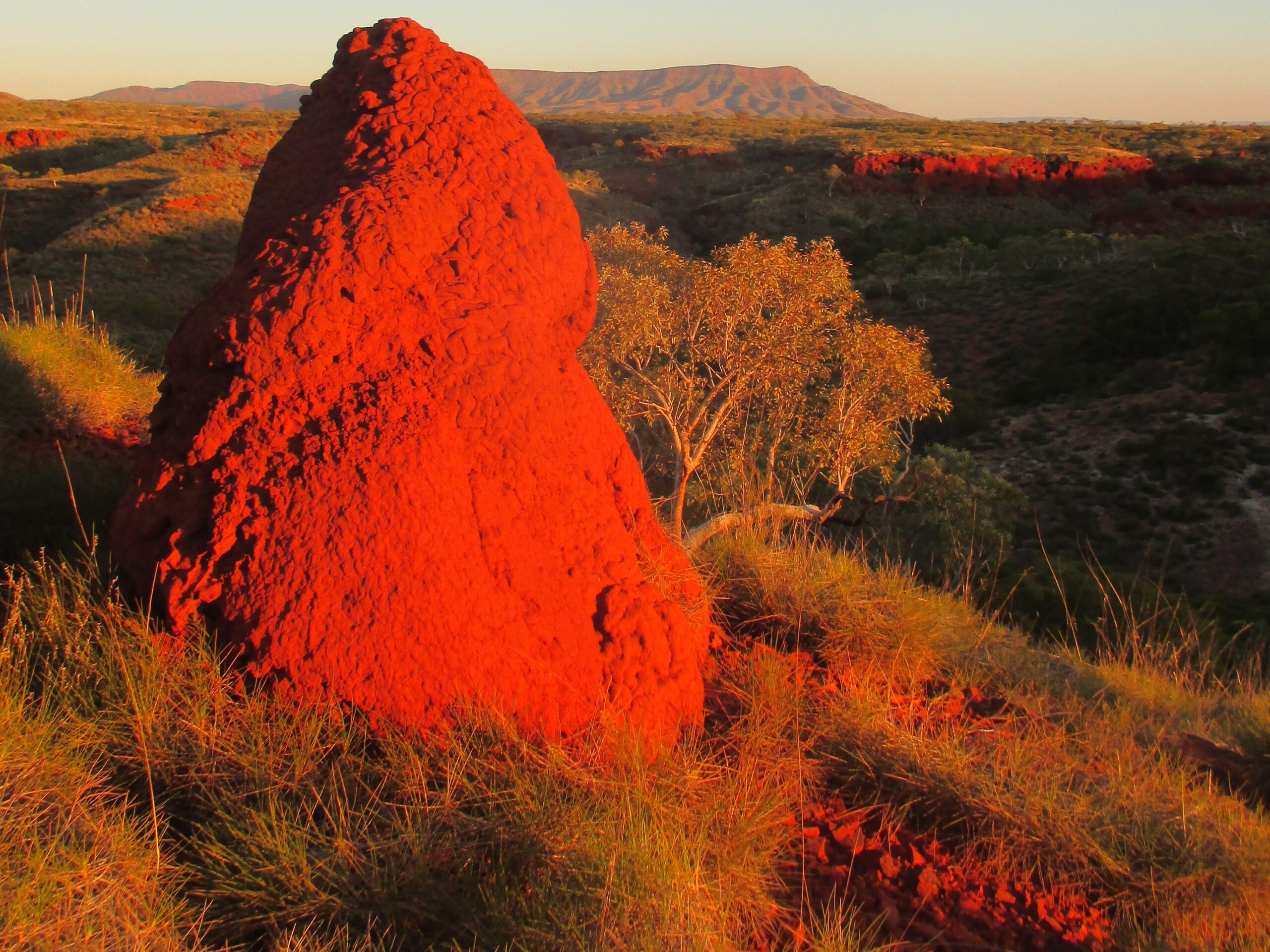
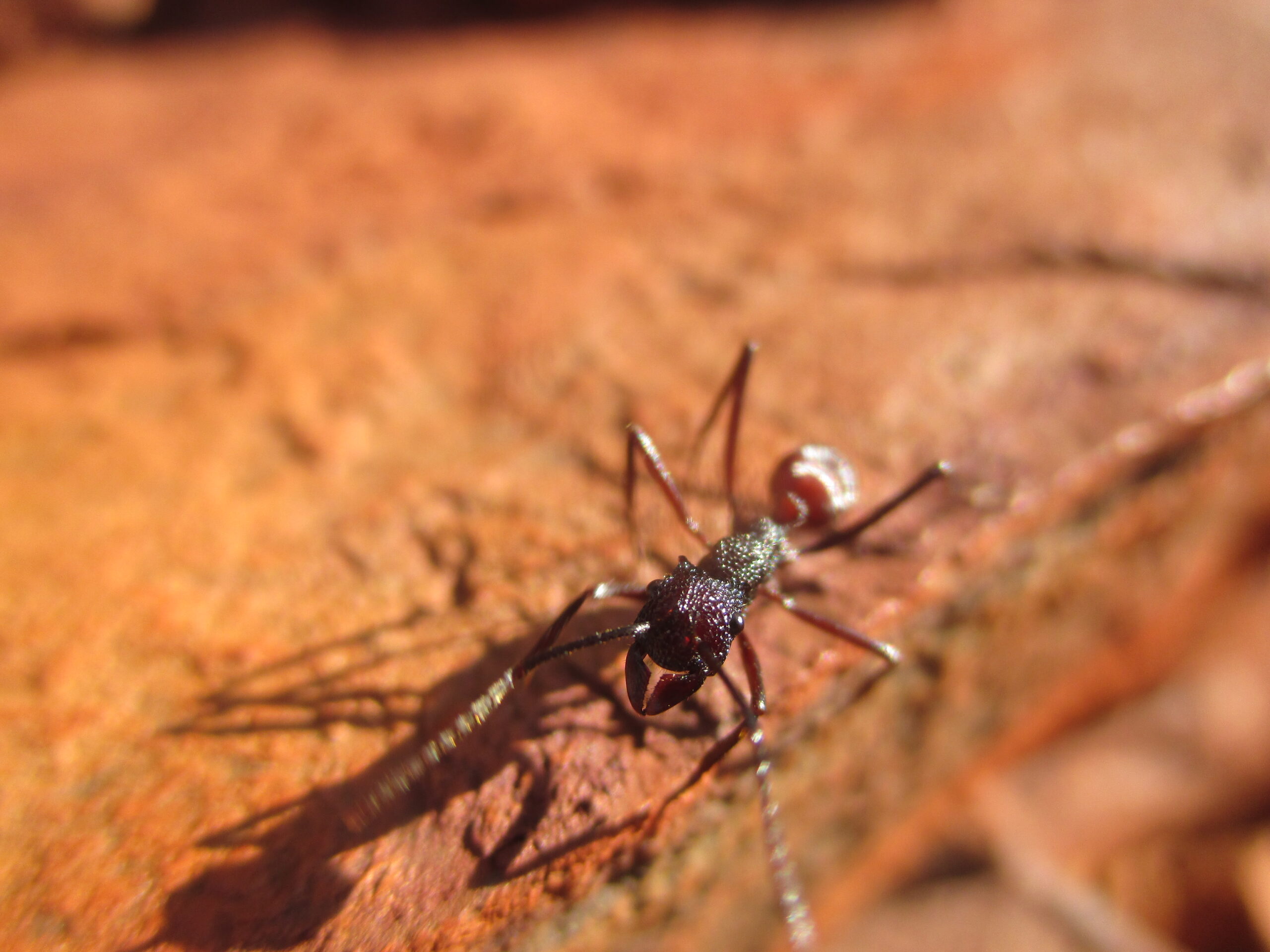
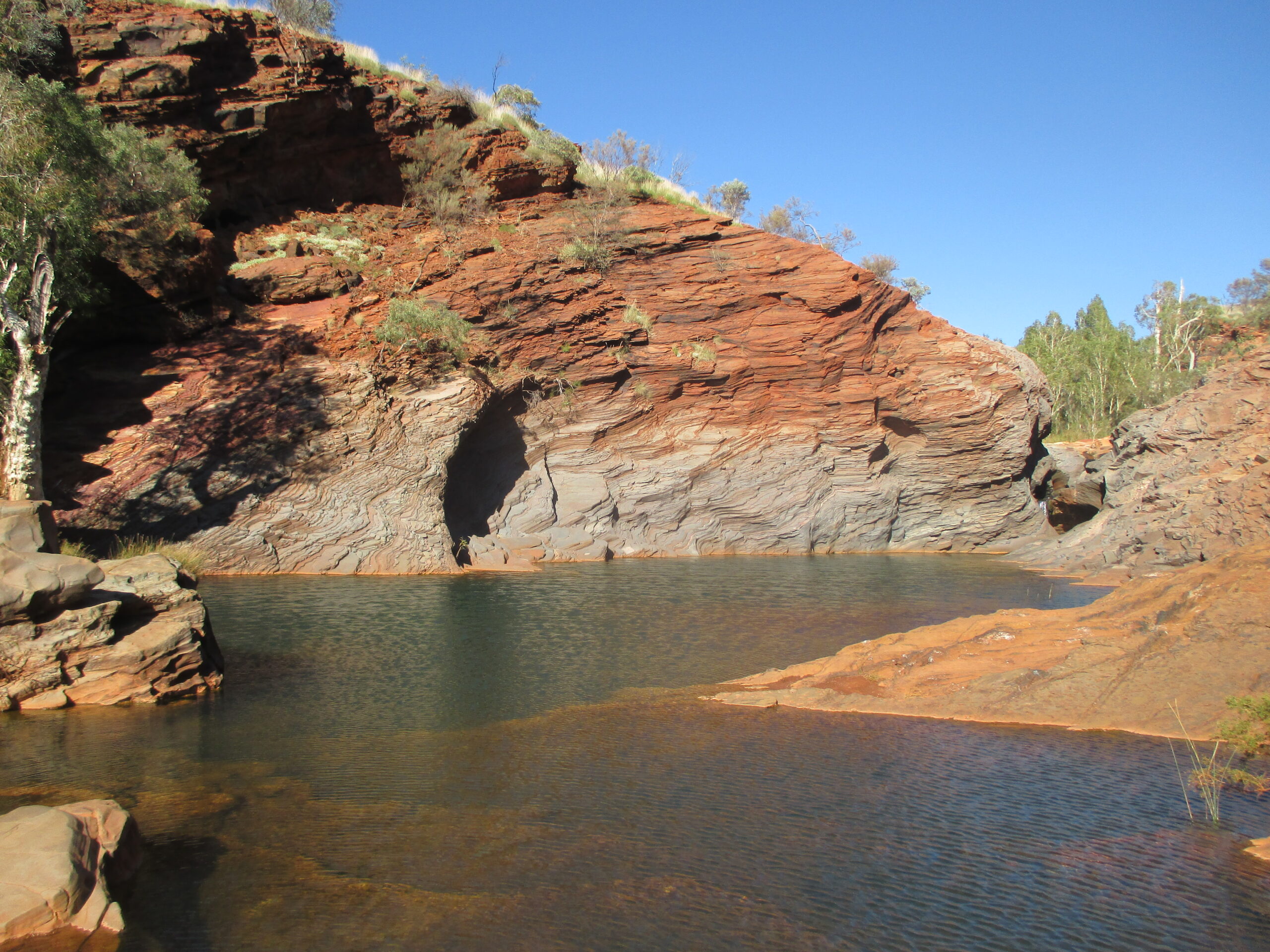
Back to the coast
En route, we had what is a common occurrence in the outback after rainy season – a flooded road. Dips in the road are often filled with standing water that remains for weeks after. It is worth getting a 4×4 for an Australian road trip, for the extra height and decent suspension, to navigate floods and bumpy roads.
The most obvious worry is flooding the car and becoming stranded. The less obvious threat is a crocodile lurking. I was fairly confident we were too far inland to worry about a saltwater crocodile, so I waded in, and lucky found the water wasn’t too deep to drive through.
We meandered through Millstream-Chichester, another beautiful park, before we arrived on the north coast at Port Hedland. We followed the road east in the direction of the Northern Territory. We would have to pass the stretch known as the 80-mile beach, then we would stop at Broome where I would say goodbye to Katie and Lucy. Before all that, though, we had to deal with a major obstacle – my car broke down in the middle of nowhere – we were stranded.
